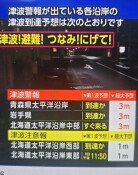South Korea risks Japan-Style slump amid debt surge
South Korea risks Japan-Style slump amid debt surge
Posted June. 07, 2025 07:03,
Updated June. 07, 2025 07:03
South Korea’s private sector debt has reached levels comparable to those seen in Japan just before its economic bubble burst in the 1990s, according to an analysis released by the Bank of Korea (BOK). The central bank warned that the country faces growing risks from excessive debt and overreliance on real estate, without having undergone the structural reforms needed after past financial crises.
The BOK’s latest report shows Korea’s private debt-to-GDP ratio stood at 207.4 percent in 2023, closing in on Japan’s 214.2 percent in 1994, the year property prices there peaked. Of particular concern is that household debt accounts for 45 percent of Korea’s total private sector debt, compared to only 32 percent in Japan just before its bubble collapsed.
Korea's real estate loans have surged to three times the level Japan experienced during its boom. These imbalances could pose even more severe risks than those Japan faced, as individual households now bear nearly half of Korea’s private debt burden and much of the credit is concentrated in low-productivity sectors such as construction and property.
In the 1990s, Japan’s economy entered a prolonged stagnation after losing ground in manufacturing to rising competitors like South Korea. The bursting of the real estate bubble triggered a credit crunch, corporate failures and a long-term consumption slump. The country’s annual economic growth, which had topped 7 percent in the 1970s, dropped to near zero for the next 30 years. Excessive speculation in real estate, driven by the belief that prices would never fall, drained capital from productive sectors and left Japan with massive bad debt once the bubble burst.
For years, both domestic and international institutions have warned that South Korea’s real estate-driven asset structure and rising household debt could undermine its long-term growth. But little has changed. As of the end of 2024, Korea’s real estate-related private debt stood at 1,932 trillion won, rising by more than 100 trillion won annually over the past decade.
Unlike Japan, which entered its stagnation period with deep reserves as the world’s second-largest economy, South Korea today faces weaker fundamentals. Household and business consumption and investment capacity appear exhausted. Without bold action to escape its deepening debt trap, sustainable growth will be hard to achieve.
As the government prepares to respond to external pressures, including possible tariff hikes from the United States, it must also confront the looming crisis at home. The household debt bomb, rooted in speculative real estate, may prove just as damaging as any trade shock from abroad.







